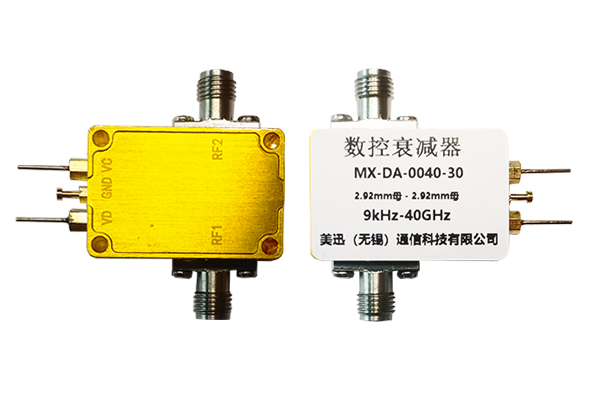customizable premium-quality phase-stable pin based RF switching device for laboratory instruments

PIN diodes have evolved into key components for microwave and RF applications due to their built-in device properties Their fast toggling behavior plus small capacitance and reduced insertion loss renders them apt for use in switch modulator and attenuator circuits. The essential process enabling PIN diode switching is manipulating current through the diode using a biasing voltage. The applied voltage modifies the depletion layer thickness at the p–n interface thus affecting conductivity. Adjusting the bias enables PIN diodes to be switched for high-frequency operation while minimizing distortion
In systems that require precise timing and control PIN diodes are commonly integrated into sophisticated circuit topologies They operate within RF filter topologies to control the passing or blocking of chosen frequency bands. Their competency in managing strong signals qualifies them for amplifier power splitter and signal source applications. Reduced size and improved efficiency of PIN diodes have enhanced their applicability in wireless and radar engineering
Evaluating Coaxial Switch Design and Functionality
Creating coaxial switches is a challenging task that demands consideration of a variety of technical parameters The performance is governed by the choice of switch type frequency operation and insertion loss properties. Superior coaxial switch design seeks minimal insertion loss alongside strong isolation between ports
Evaluation focuses on quantifying return loss insertion loss and interport isolation as major metrics. Metrics are assessed using simulation tools theoretical modeling and laboratory measurements. Accurate performance evaluation is key to ensuring coaxial switches operate dependably
- Simulations combined with analytic methods and practical experiments are standard for coaxial switch evaluation
- The behavior of a coaxial switch can be heavily influenced by temperature impedance mismatch and manufacturing tolerances
- Cutting-edge developments and emerging trends in switch engineering work to improve performance while shrinking size and reducing power usage
LNA Design for Maximum Fidelity
Optimizing the LNA’s gain efficiency and operational performance is central to maintaining signal integrity This calls for deliberate active device selection bias strategies and topological design choices. High quality LNA layouts suppress noise sources and deliver amplified signals with limited distortion. Modeling simulation and analysis tools play a central role in evaluating the impact of design decisions on noise. Targeting a small Noise Figure quantifies how well the amplifier keeps the signal intact against intrinsic noise
- Opting for transistors with small inherent noise is a vital design decision
- Using appropriate optimal bias schemes is important to control transistor noise
- Topology of the circuit strongly affects total noise performance
Using impedance matching noise cancelling structures and feedback control optimizes LNA function
Radio Frequency Path Routing with Pin Diodes

Pin diode based switches enable adaptable and effective RF signal routing in various use cases Their high-speed switching lets systems dynamically alter signal routing in real time. Key benefits include minimal insertion loss and strong isolation to limit signal deterioration during switching. They find use in antenna selection systems duplexers and phased array antennas
Operation relies on changing the device resistance via applied control voltage to switch paths. The deactivated or off state forces a high resistance barrier that blocks RF signals. With forward bias the diode’s resistance diminishes permitting the RF signal to flow
- Furthermore additionally moreover pin diode switches deliver fast switching speeds low power use and compact footprints
Diverse design options and architectures for PIN diode networks allow implementation of sophisticated routing functions. Linking multiple PIN switches produces dynamic matrices that allow adaptable signal path configurations
Assessing the Efficacy of Coaxial Microwave Switches

Rigorous evaluation and testing of coaxial microwave switches are key to confirming dependable operation in electronics. Many various diverse factors determine the switches’ performance including insertion reflection transmission loss isolation switching speed and bandwidth. A full evaluation process measures these characteristics under various operating environmental and test conditions
- Additionally the assessment should examine reliability robustness durability and the ability to endure severe environmental conditions
- The end result of a solid evaluation produces essential valuable and critical data to support selection design and improvement of switches for defined applications
Comprehensive Review on Reducing Noise in LNA Circuits
LNA circuits are key elements in RF and wireless systems, amplifying faint signals while minimizing noise additions. This survey offers an extensive examination analysis and overview of approaches to minimize LNA noise. We explore investigate and discuss principal noise contributors like thermal shot and flicker noise. We further consider noise matching feedback solutions and biasing best practices to lessen noise. The review underlines recent breakthroughs like innovative materials and circuit architectures that achieve lower noise figures. By providing insight into noise minimization principles and practices the review supports researchers and engineers working on high performance RF systems
Applications of Pin Diodes in High Speed Switching Systems

PIN diodes’ unique remarkable and exceptional behavior makes them appropriate for fast switching systems Their low capacitance and resistance aid rapid switching speeds to meet demands requiring precise timing control. Moreover PIN diodes exhibit linear proportional responses to applied voltage enabling precise amplitude modulation and switching control. Their adaptable flexible and versatile nature makes them suitable applicable and appropriate for broad high speed applications Examples include optical communications microwave circuits and signal processing devices equipment and hardware
Integrated Circuit Coaxial Switch Circuit Switching Technology
Integrated coaxial switch IC designs improve signal routing processing and handling across electronic systems circuits and devices. These ICs control manage and direct coaxial signal flow providing high frequency capability with low latency propagation and insertion timing. Integrated circuit miniaturization creates compact efficient reliable and robust designs favorable for dense interfacing integration and connectivity use cases
- Through careful meticulous and rigorous application of such methods engineers can design LNAs with top tier noise performance enabling dependable sensitive systems By meticulously carefully and rigorously applying these methods developers can produce LNAs with superior noise performance enabling sensitive reliable electronics By rigorously meticulously and carefully implementing these techniques practitioners can achieve LNAs with remarkable noise performance for sensitive reliable electronics With careful meticulous low-noise amplifier and rigorous execution of these strategies designers can obtain LNAs exhibiting excellent noise performance for sensitive reliable systems
- Applications range across telecommunications data communications and wireless networking
- These technologies find application in aerospace defense and industrial automation fields
- IC coaxial switching finds roles in consumer electronics audio visual equipment and test and measurement tools
Considerations for LNA Design at Millimeter Wave Frequencies

LNA design at millimeter wave frequencies faces special challenges due to higher signal attenuation and amplified noise impacts. Component parasitics strongly influence mmWave performance mandating careful PCB layout and component choice. Minimizing mismatch while maximizing gain is critical essential and important for mmWave LNA operation. Selecting the right active devices including HEMTs GaAs MESFETs and InP HBTs helps secure low noise figures at mmWave. Moreover additionally furthermore the development implementation and tuning of matching networks plays a vital role in ensuring efficient power transfer and impedance match. Package-level parasitics should be considered because they may impair LNA function at mmWave. Adopting low loss transmission media and careful ground plane strategies is essential necessary and important to cut reflections and retain bandwidth
Characterize and Model PIN Diodes for RF Switching Applications
PIN diodes serve as important components elements and parts within a variety of RF switching applications. Comprehensive accurate and precise characterization of these devices is essential to enable design development and optimization of reliable high performance circuits. That entails analyzing evaluating and examining electrical voltage and current characteristics such as resistance impedance and conductance. Their frequency response bandwidth tuning capabilities and switching speed latency or response time are likewise measured
Moreover furthermore additionally building accurate models simulations and representations for PIN diodes is essential crucial and vital to predict their RF system behavior. A range of modeling approaches including lumped element distributed element and SPICE models are used. Choosing the right model simulation or representation depends on specific detailed particular application requirements and desired required expected accuracy
Sophisticated Techniques to Achieve Minimal LNA Noise
Designing LNAs is a crucial task requiring careful attention to circuit topology and component selection to reach optimal noise performance. Emerging novel semiconductor developments have allowed innovative groundbreaking sophisticated design strategies that cut noise considerably.
Among several numerous numerous these techniques are employing utilizing implementing wideband matching networks incorporating low noise transistors with high intrinsic gain and optimizing biasing scheme strategy approach. Additionally advanced packaging and thermal management practices are critical for minimizing external noise influences. With careful meticulous and rigorous deployment of these approaches developers can accomplish LNAs with outstanding noise performance enabling trustworthy sensitive electronics
